#personality theory
Text
psychologists developing personality tests really said "here, take my uquiz and i'll tell you how fucked up you are"
#why am i taking this degree again#oh yeah because it would be socially unacceptable for me to not have a piece of paper that says i completed my undergrad#psychology student#studyblr#myhoneststudyblr#study blog#studying#bumpy#uquiz#student life#psychology#psychology humor#personality quiz#personality disorder#personality types#personality theory#personality traits#university#college#college life#university life#university student#university studyblr#college student#college studyblr
306 notes
·
View notes
Text
"Integration is healthy and disintegration is unhealthy" is an overly simplistic, spiritual bypassing view to throw in the bin. I'm going to invite you to view it in a different way.
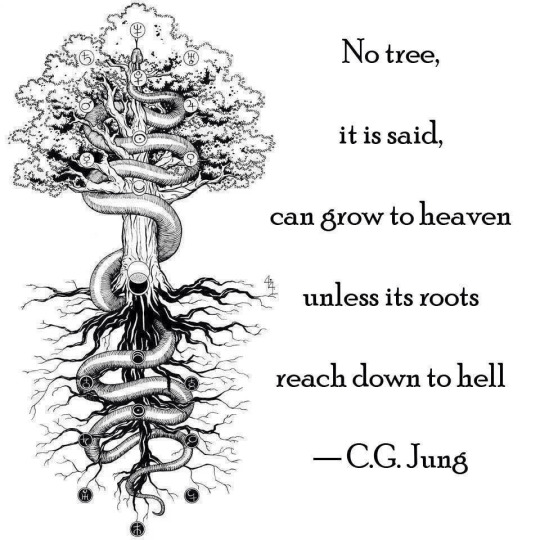

Integration is your heaven. Your light. It represents what you aspire to embody, but feel scared to embody, or cannot seem to embody no matter how hard you try. You do not have enough personal development, insight or healing to embody your integration type properly. False security is when you embody your integration type in a shallow way. You indulge in your integration type without having done enough healing to make the transformation secure, deep-rooted and long-term. You're reaching up to heaven but your roots don't reach down to hell, and so your extension is very short-lived. The excess branches you have grown to reach up to your integration type quickly die or worse, get infected, as your root system down in hell is not strong enough to sustain the tree. After periods of false security you are left with a lot of trauma, a big mess in your life, and you get pulled right back into your disintegration type's grip. You indeed can integrate in an unhealthy way... and you can also disintegrate in a healthy way. Keep reading.
Disintegration is your hell. It represents your natural stress response, your toxic coping mechanism, the thing you just really hate in yourself and in other people, your default way of overcompensating for your core type's missing pieces, your darkness. Inside your disintegration type is a wealth of secrets and wisdom that you need to uncover, including your wounded inner child. When we analyze our disintegration type and our own personal disintegration experiences, we learn a lot about ourselves. We can only learn what we are missing and what we need to work on from our disintegration type, not from our integration type. Healthy disintegration provides us the necessary foundation that we need in order to reach up towards our integration type. Disintegration is not something to be resisted the same way that cleaning your room and doing exercise is not something to be resisted just because it doesn't feel good. Conscious Disintegration is an essential part of shadow work. It is what Carl Jung would call "making the unconscious conscious".
-----
Integration and disintegration are definitely not the same. But they are also not black and white, "one is good and the other is bad". If you view it this way you are bound to bypass your necessary shadow work and end up in a cycle of false security and extreme disintegration.
#enneagram#enneagram 1#enneagram 2#enneagram 3#enneagram 4#enneagram 5#enneagram 6#enneagram 7#enneagram 8#enneagram 9#shadow work#carl jung#personality theory#typology#integration#disintegration
166 notes
·
View notes
Text
what Ni is NOT
a lot of people in the community get Ni wrong. and i totally get that because Ni is often talked about in a super vague, weirdly prophetic light. which it is NOT.
Ni does NOT mean you can’t make connections between ideas
Ni does NOT mean you only see one truth
Ni is NOT a predictive function
all Ni is, is intuition as it makes sense to you personally. Ne, looks at the outside data and expands on that, Ni looks at the outside data and puts it in their internal framework. that’s the only difference. that Ni is personal and Ne is less personal when dealing with the abstract.
the combination of Se and Ni can come across as Ne because the user takes the tangible details and then subconsciously adds them to their mental framework. the way i personally decide between Ne and Ni is often based on this, idea. that Ni tends to be a more subconscious process, often with the user struggling to explain where the conclusion came from. Ne tends to be an obvious process. i have never once had to question where an Ne user got their idea from, because they often talk through their process unknowingly.
but just because you can’t fully understand it does NOT make Ni a sort of prophetic function. never was and never will be. it’s just the process of boiling physical things into concepts and adding said concepts to a mental framework that only makes sense to that specific person.
#mbti#mbti types#infj#introverted intuition#intj#mbti infj#personality theory#cognitive functions#typology#carl jung#myers briggs
135 notes
·
View notes
Text
Controversial Opinion
What’s the obsession with enneagram 4? I genuinely don’t get why there are so many people so obsessed with this type.
I get that there are some people that just romanticizes some of the mental illness aspects of them HOWEVER mental illness isnt an inherent E4 thing and neither is personal struggle I can see why they correlate that to 4s (maybe cuz of the pseudo depression naranjo described on his work however thats just a false image they portray so?) , which mostly stems from terrible understanding of the type. However the increase in mistypes? The obsession with the SX4 subtype? The obsession with the toxic aspects of E4? Idk I just don’t get it.
I’m asking from a place of genuine wonder cuz this has been going on for a long time. And I want some clarity as to why it happens.
#mbti#zodiac#zodic signs#16 personalities#ennegram#personality types#mbti personality types#enneagram#typology#personality typology#enneagram 4#4w3#4w5#sx/so#so/sx#sp/so#sp/sx#so/sp#personality database#personality theory#personality tests#personality traits
87 notes
·
View notes
Text
The Enneagram of Divine Forms — Point 5: The Observer
Will narrow the universal view into the particular and subjective point of view of the observer
Always losing perspective of the forest because their entire attention is on particular trees
Is found collecting bits and pieces
Can spend a lot of time trying to disclose the riddles of life and society
Continuous interest in observing others
Fear that they are also the focus of attentive study and observation by others
Inclined to hide and be anonymous around people
General inclination to play the social game without giving of themselves completely and openly
General attitudes of fear of the environment, natural and social, ‘nervous wrecks’ because of the pressure of their fear and stress
Perceives and projects their distortion of reality by thinking that they have been alienated by their siblings or the world
Ego-delusion: of being stingy or a person who keeps to themselves as they judge others exclusively from their personal perception and narrow point of view
Passion of avarice: amass information and accumulate, pieces of knowledge and gossip about others, as well as collecting material things
Meddling on one side and antisocial on the other
Introjection: their primary defense mechanism, in which they absorb themselves in and internalize the attributes and personalities of others by assimilating their behavior, emotions or characteristics
Self-obsessed, see themselves as a separate bystander
Assert to themselves: ‘I am sociable and self-sufficient’
Shyness which makes them nervous socially
Ego-reaction: distrust, which produces a constant looking in every direction
Ego-justification: to face facts with cynicism because of their poor idea of the motives and self-interest of others
Intense aversion or repulsion that is felt acutely, which becomes the starting point for their plotting and scheming
Considerate on one side and imposing on the other
Source: @/if u seek amy on PDB
#personality theory#personality types#typology#enneagram#ichazo#enneagram 5#5w4#5w6#intj#intp#istj#istp
57 notes
·
View notes
Text
Enneagram system
A rewrite/more in depth post of the Enneagram system compared to my last post on it. Not an expert. May change later.
If you like kpop and typology, check out my blog. I do type analysis on idols and typology notes.
___
What is Enneagram?
I mainly took notes from Riso Hudson theory.
A typology system that categorizes personalities into 9 different types. Each type is numbered from 1 - 9.
Each type has a desire and fear that motivates their actions in life.
Core and Wings
Core: Our main type. It is the foundation of our personality and does not change.
Wing: Acts as a complement to our core. Wing can be one of the two types that sit beside core type. E.g a core 2 can have a 1 wing (2w1) or 3 wing (2w3). But is not necessary to use since wings can change and/or can be balanced.
Levels of Development
Summary of healthy - unhealthy levels of personality
- Healthy levels -
Level 1: Liberation
Let go of self image so we are free to express ourselves however we want. Self acceptance of all traits.
Level 2: Pyschological Capacity
Begin to identify with positive qualities in our personalities and learn to improve ourselves with them.
Level 3: Social Value
Still strongly identify with our set self image and make effort to maintain image. Want to share our good talents and abilities to make a positive effect on self and others.
- Average levels -
Level 4: Imbalance/Social roles
Idealization of self image; have a major focus on either good or bad qualities, no in between. Fear is an obstacle here.
Level 5: Interpersonal Control
Insist on self image being accepted by others, which can cause conflict. Can lead to controlling and manipulation.
Level 6: Overcompensation
Overcompensate due to underlying negative feelings. Desperate for others' acceptance.
- Unhealthy levels -
Level 7: Violation
Desperation for acceptance leads to violation of one's self and others. Serious conflict can occur. May victimize themselves to excuse offensive actions.
Level 8: Obsession and Compulsion
May be overly obsessed with an image of who they want to be. Deceives others
Level 9: Pathological Destructiveness
Most unhealthy state, display very toxic traits and behaviours, may have mental breakdown
Disintegration vs Integration
Or basically Stress vs Growth
Disintegration: When under heavy amounts of stress, a type will go into their disintegration type. They will pick up the negative traits of that type and act like the unhealthy version of it.
Integration: When maturing/developing positively, a type will go their integration type. They will pick up the positive traits of that type and improve their character.
___
* I will only give short descriptions for the triads. I will explain more in depth in individual posts.*
Centers of Intelligence
There are 3 centers of intelligence. Each center shows how and why we solve issues in life.
Gut/Instinct/Anger (types 1, 8, 9)
Gut center focuses on reacting and taking action immediately. This triad has an issue with control and anger.
1: Often perfectionists who repress their anger in order to remain morally good. They see their anger in a negative light.
8: The most open and comfortable with their anger. Uses it to assert boundaries, especially since this type fears vulnerability.
9: Often a passive type that dismisses or downplays their anger. They fear conflict and may worry being more assertive will cause a negative effect on themselves and others.
Heart/Image/Shame (types 2, 3, 4)
Heart center focuses on self identity and connections. This triad wants love and recognition and do what they believe is best to get that. They struggle with self worth.
2: They want to be needed and helpful to others. Pride themselves on being of service. Wants to receive love and to give love.
3: The most image oriented type. They always try to show their best selves and best efforts in order to seem admirable. Fears being worthless.
4: Wants to create a unique image for themselves, believes being boring will make them unloveable.
Head/Thinking/Fear (types 5, 6, 7)
Head center focuses on ideas, making rational decisions, and gathering info. This triad deals with fear and uncertainty.
5: The most internalized head type. 5's want to gather as much knowledge and resources as possible in order to stay secure and independent.
6: Quite an anxious type who seeks security through relations with others.
7: This type fears pain and suffering and seek out experiences in order to avoid negativity.
___
Other triads
- Harmonic Triads -
How types handle conflict, coping mechanism
Reactive (4, 6, 8)
Reactive types are not afraid to show and speak about their true feelings. They may seem "dramatic" in a way.
4: Melodramatic and self absorbed in negative feelings, drowns in intensity
6: Will argue, stick up for the right thing, moody, anxious
8: Big and loud reactions, can be very fiery
Positive (2, 7, 9)
Positive types dislike negativity and conflict and have their own ways of avoiding such tension. Optimistic during hard times.
2: Actively tries to be a good and kind person, only tries to focus on the good aspects of people
7: Seeks out fun opportunities to make their life exciting (basically distraction)
9: Values harmony and peace, will not risk any type of action that will disturb these values
Competency (1, 3, 5)
Competent types are often perfectionists who want to show their best selves. Objective and rational.
1: Strives to be correct and right, wants to be precise in what they do
3: Represses softer emotions to keep up a certain image, thrives with work/passions so they can be the best at what they do
5: Detached from feelings to remain logical and objective, knowledge seeking
- Hornevian Triads -
Relationships with others, how they get what they want
Assertive (3, 7, 8)
Assertive types go against people to get what they want. Do not back down easily, can seem aggressive and forceful.
3: Pushes through obstacles for achievements, goal oriented
7: Asserts their right to have fun, refuse to be restricted
8: Asserts power and strength, places boundaries
Withdrawn (4, 5, 9)
Withdrawn types are very internalized and do not show their needs openly. Deals with things alone.
4: Feels something is wrong with them internally, feels misunderstood
5: Detached from others as to not drain their own energy, will figure it out themselves
9: Introspective, lets life happen
Compliant (1, 2, 6)
Compliant work with people to get what they want. Builds relationships for security, wants to be helpful to others.
1: Doing the right thing instead of one's own wants
2: Focus on other's needs more instead of self
6: Tries to build a safe and secure environment by getting ppl to work together
- Object Relations -
How we are affected by others, our own affect on others, how we react to personal wounds
Attachment (3, 6, 9)
Seek out bonds and companionships for particular reasons. Individuality vs adaptation.
3: Changes their image to suit whoever they are with in order to meet expectations
6: Creates support systems to help with their self doubt and indecisiveness
9: Adapts to the energy of the environment to keep harmony
Frustration (1, 4, 7)
Triad gets frustrated when their needs aren't met.
1: Has a need to improve every little imperfection they find
4: Dislikes shallowness, longs for depth and complexity
7: Not enjoying experiences, not feeling fulfilled
Rejection (2, 5, 8)
Their own needs feel unimportant to others, so they reject their own needs as well.
2: Rejects the need to receive love and guidance, instead focuses on connecting with others and helping them.
5: Ignores and minimizes all their needs, offers knowledge and expertise in some hope of being acknowledged for their intelligence.
8: Rejects by being never putting their guard down, wanting to appear strong and as the protector of others.
___
Subtypes
Claudio Naranjo theory
There are three subtypes/instinctual variants that show our drive in life. There are 27 different subtypes in total.
Self Preservation (Sp)
Focuses on physical safety and security. Our physical health, financial security, obligations, and comforts.
Sexual/One - on - one (Sx)
Wants intensity and deep connections, one on one relationships are preferred.
Social (So)
Prefers to be in a community, wants to create good connections and bonds with others. Socially aware, focus on group goals and contributions.
___
Tritype
Katherine Fauvre theory
A minor but still interesting piece of Enneagram. Tritype is formed of your 3 dominant types from each center. The first number will always be your core, followed by your other 2 dominant types.
E.g 369. 3 = core, heart. 6 = head. 9 = gut.
___
Enneagram notes
___
Side blog:
Kpop astrology @rainy-astrology
Kpop fanarts @rainy-artworks
#enneagram#enneagram types#typology#mbti#enneagram notes#tritypes#triads#enneagram triads#instinctual variants#subtypes#enneagram personality#personality theory#enneagram 1#enneagram 2#enneagram 3#enneagram 4#enneagram 5#enneagram 6#enneagram 7#enneagram 8#enneagram 9#integration#disintegration#stress#growth
99 notes
·
View notes
Text
tumblr dot com is the place where each Enneagram type comes to be the most insufferable version of ourselves
#said lovingly#enneagram#enneatypes#personality types#tumblr#tumblr culture#typoglogy#personality theory#1w9#1w2#2w1#2w3#3w2#3w4#4w3#4w5#5w6#5w4#6w5#6w7#7w6#7w8#8w7#8w9#9w8#9w1
20 notes
·
View notes
Text




++ scorpio sun, aquarius moon, intp
— i see the world differently
#mood#big mood#moodboard#aesthetic#scorpio#aquarius#intp#mbti#mbti things#mbti personalities#myers briggs#personal#personality theory#zodiac#zodiac signs#16 personality types#scorpio sun#aquarius moon#full moon#moon#sun#astrology
105 notes
·
View notes
Text
Introduction to Aesthetic Aspiration Personality Theory (AAPT) V. 0.2
Releasing an update to AAPT(formerly AEPT) that builds off of months of utilizing the system and my evolving thoughts and terms for the system. I hope you enjoy! I've also finally made a discussion group for AAPT, you can join here: https://www.facebook.com/groups/1043756753302068/ .

If you're interested in a body neutral, gender expansive framework for exploring beauty made by a queer neurodivergent person this is for you
"Personality is the supreme realization of the innate idiosyncracy of a living being. It is an act of high courage flung in the face of life, the absolute affirmation of all that constitutes the individual, the most successful adaptation to the universal conditions of existence coupled with the greatest possible freedom for self-determination." Quote from Carl Jung
As a queer, gender non-conforming, neurodivergent person I've oftentimes felt I didn't have my experiences reflected in Yin Yang based style systems despite finding them fascinating. So using my experience with personality theories and eclectic wisdom traditions I've crafted my own system that prioritizes personality and authentic preference over others’ perception of who someone is or is supposed to be. I aimed to avoid unnecessarily boxing people in. I've tried to create an accessible structure that can model complexity and supposed "contradictions" while allowing fine-tuned articulation of preference in different contexts. I avoid gender essentialism in how I am exploring these concepts as well. Gender is multifaceted and socially constructed, and I am looking for more specific atomized ways of looking at people's relationship to being and expression. AAPT mostly only relates to gender in terms of how certain kinds of relating, or power dynamics have been stereotyped as relating to certain genders.
I credit Northrup for her original application of Yin and Yang to fashion. I also owe a lot of my aesthetic awareness, and the foundations of this system to later innovators in the Yin Yang style tradition like McJimsey, Kitchener, Kibbe, and Schemmel. As much as I think it's important to have a body-neutral space for exploring personality and style, there's a lot of nuanced insights in systems that focus more of physicality too. These systems have interesting points about making particular visual impacts, different ways of relating to your body, exploring different aspects of identity, and navigating societal expectations. At the same time I'm critical of focusing on ascribing archetypes or personality traits to body shapes, or constraining expression or joy by focusing on body shape.
AAPT is focused on inner beauty first and foremost. AAPT isn't built to give tips on how to dress for your body. I may make posts with advice on how to use AAPT for style, or common associations with fashion elements. However, it isn't the foundation of the system, and AAPT isn't here to give constraints. As a personality system AAPT is an exploration of some differences in preferred ways of moving and relating to oneself in the world. As a framework it helps people articulate which ways feel more or less pleasurable, enlivening and resonant. It also serves as a framework that helps people integrate different ways of relating to themselves and others they have an antagonistic or unconscious relationship with. Despite each persons’ unique emphasis on parts of the range of who someone can be in relation to power and vulnerability, accessing the full range of sensation and regulation there is core to a sense of wholeness and flourishing.
AAPT works as a description of core long-term motivators for style. It is useful for exploring what people feel is authentic to their empowered self and resonant with their yearnings in life. While I think certain kinds of styles can be more congruent with people's internal experience, fashion is very situational and cultural as well. I encourage people to be able to experiment and play with style and expression lifelong, rather than feel they need to quickly land on an identity or consistent presentation that might be restrictive.
Aesthetic Aspirations
I've shifted from the Yin Yang of other systems' framing to alternative conceptualization because I believe they are more specific and carry less gendered cultural baggage. Instead of Essences like other systems have labeled similar phenomena, I chose to refer to them as Aspirations in my system to reflect a focus on them as active processes and ways of relating people taken on rather than an innate state. I've also used terminology for the aspirations I believe are gender expansive, inclusive, and intuitively graspable.
The Aspirations in AAPT are as follows:
Innocent: soft, cute, dependent, delicate, gentle, and guileless
Charming: interest in enticing activities, and eliciting desire and pleasure in themselves and others. Charming Aspiration can seem alluring, captivating, titillating and warmly inviting.
Visionary: inspirational, entrancing, wise, otherworldly, sagacious, mystical
Mischevious: light-hearted mischief, boisterous, fun-seeking, silly, and frisky
Hardy: tough, wants to be strong for themselves and others, focus on sturdiness, endurance, strength, asserting one’s capacities onto the environment.
Sovereign:commanding, forceful, imperious, and powerful
Formal: balanced, regimented, orderly, even, controlled, and refined
The Aspirations are based on two different lenses.
The first lens is Attunement vs Opposition as two contrasting modes of framing interactions with oneself and one's environment. Attunement Aspirations share a soft responsivity, a focus on attracting towards oneself what it deems valuable, and a strong sensitivity towards latent, delicate and idealistic matters. Opposition Aspirations share a hard edged directive focus, a focus on taking action on its environment, and an awareness of what ways it can push and make use of objects and people around it
The second lens is Scales of Agency. Those framings of scales of interaction being Personal, Relational, and Transcendental. Personal Aspirations are focused on what is located in the self and how that self is impacted in the here and now. Relational Aspirations are focused on building out, managing, and proactively shaping their environment. Trascendental Aspirations are focused on the meta-framing of encapsulating power dynamics, the context that shapes the flows of influence and prioritization within a domain.
These lenses generate the Aesthetic Aspirations as follows:
Personal + Opposition = Mischevious
Relational + Opposition = Hardy
Transcendental + Opposition = Sovereign
Personal + Attunement = Innocent
Relational + Attunement = Charming
Transcendental + Attunement = Visionary
Relational + Balance = Formal
3 Layers
There are three layers which independently have different Aspiration stackings. Aspiration stackings are the ordering of Aspirations that describe who one is. The three layers are:
Layer A: Lifestyle
In this layer what people’s sense of preferred activities is articulated, it often relates to the kind of career someone wants, as well as the purpose of the activities one likes to take on.
Layer B: Affiliation:
This is the layer of camaraderie, friendship, typical presentation, and the specialized roles or flavorings in the activities and interactions one prefers to focus on.
Layer C: Intimacy:
This layer articulates the flavoring and roles one prefers among chosen family, and lovers. It articulates any other relationships or kind of activities that defines the core of what home is to someone, or a kind of sublime renewal of oneself.
Stackings, Accentuation, and Baseline
In each of the 3 layers people first identify Accentuated and Unaccentuated Then people rank their Accentuated Aspirations in each. People can have different amounts of Accentuated Aspirations.
An example typing would be
A: Innocent, Mischievous, Hardy, Formal
B: Sovereign, Innocent, Formal, Visionary, Charming, Hardy, Mischievous
C: Charming, Mischievous, Innocent
All the seven Aspirations are fundamental to a life that is wholly lived. However, some are Accentuated in the sense there is a clear active desired intensification and identification of self with that energy. Everyone can be mischievous, everyone has innocence, it is healthy for people to be connected to all 7 Aspirations as part of their regulation. This connection to all 7 Aspirations in a healthy balanced way that enables self-regulation and wholeness is crucial and I will be referring it as the Baseline Integration of each Aspiration. In future posts I will further elaborate on what having or lacking Baseline Integration of each Aspiration looks like. However, not everyone feels these as an aspect of self they wish to accentuate as part of their creative being beyond a foundational sense.
There's an unmitigatedness to the Accentuated Aspirations. Accentuated Aspirations are a core aesthetic in the sense that they describe a kind of beauty that people feel drawn to resonantly fully embody. Not superficial beauty but the kind of beauty that feels like a shining emanation of someone's self-determination and vital self expression. When one of the Aspirations are Unaccentuated, there is a neutrality or aversion towards it as an actively maximized way of being. To be clear people can feel adverse because of trauma or shame, but from a self knowing and empowered awareness there can still be internal incongruence.
There are patterns to how different positions within a ranking manifest. The primary Aspiration of each layer establishes the overall tone that people maximize. It is the most strongly identified and expressed. The secondary Aspiration frequently combines with the primary Aspiration for a particular spin on the primary Aspiration's agenda. It is also flexibly and loosely engaged for its own sake. The tertiary Aspiration is more subdued but still obviously flavors the overall impression. In spikes of activity it will often be engaged on its own terms for variety. The quaternary Aspiration and those that follow tend to be subtle. These Aspirations have a low, deemphasized, sustained baseline, or are brought in for contrast from usual way of being. The quinary Aspiration and onward are often hard to notice but have a subtle sense of deepening a sense of wholeness of being. These descriptions apply to the number of Aspirations people have in the first place, some people may only have a few Aspirations in a layer.
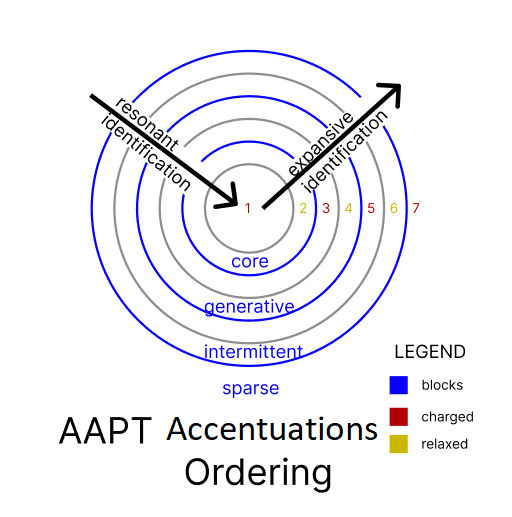
For those who are interested in interpersonal compatibility, in AAPT people have an AAPT dual which they can hypothesize, explore, and type. It can be homogeneous with one's own type or heterogeneous. It can really be any type. I've seen all kinds of unique complementary pairings.
Authority Chain
The Authority Chain characterizes a bidirectional flow of consent and influence, with a Foundational end and an Executive end. In a duality or otherwise interaction of two people.
The Aspiration towards the Foundational end has the role of accentuating sensitivities, pluripotent potentiality, and capacity for regrowth, insurrection and rebellion. In the integrated baseline sense Aspirations on the Foundational end support the capacity for connection, renewal, creativity, and freedom, and lead by embodying these values. Foundational aspirations have a bottom-up approach in these senses.
The Aspiration towards the Executive end has the role of accentuating consolidating factors, path-finding, hosting and configuring spaces towards particular ends, and utilizing power. In the integrated baseline sense Aspirations on the Executive end support the capacity for efficacy, control, and intensification and collection of power. The Executive end embodies a top-down approach.
In a duality or other desired interaction of two people, the person with the aspiration closer to the Foundational end is the Foundation, and the person closer to the Executive end will be referred to as the Executive. If the two people are the same aspiration, they will be referred to as identicals.
At the same time I want people to keep in mind each interaction of two aspirations have unique qualities that have unique flavoring and potentials outside of the Authority Chain. Also, people who have integrated Aspirations are whole people who have the potential for interaction beyond this bi-directional pattern, and often times the positive capacities of each end will not be actualized, or done so in a toxic way if Aspirations are baseline unintegrated.
Foundational <- I-M-C-F-H-V-S -> Executive
Conclusion
I want to elaborate on how AAPT overlaps with gendered phenomena and the ways it doesn't. Gender norms often keep people from fully expressing who they are in an AAPT sense. And a lot of what gendered styles or presentations are communicating can be explained using AAPT. However, AAPT does not encapsulate what gender is entirely. It does articulate aspects of self that are often assigned to gender, particularly those related to power dynamics and softness or firmness.
AAPT is an affirmation of the body-neutral beauty that is in each person that emanates out in joyful, self-determined, powerful expression. I hope that AAPT can help people reflect on parts of themselves that are often policed or suppressed by society. I believe that the right self reflection frameworks can be an empowering tool to liberate oneself from shame-based expectations and gain agency. Additionally, resonating with these kinds of foundational ways of being in the world can be a source of joy and nourishment that unfortunately many people are disconnected from.
You're beautiful just because you are~ ✧・゚: *✧・゚:*:・゚✧*:・゚✧
#kibbe#queer#essence#personality theory#body neutrality#personality typology#aesthetic#aesthetics#enneagram#animix#socionics#attitudinal psyche#style#carl jung#gender#beauty
14 notes
·
View notes
Text
Intro to the Character Class System
Welcome to the Character Classification System! This is a personality system used to categorize patterns of behavior within characters across all forms of media. This system is broken down into six colors, which each character will possess three of. These colors are Red, Orange, Yellow, Green, Blue, and Indigo.
The Character Classification system proposes the belief that the differences in the values that a character prioritizes leads to diverging perspectives and subsequent behavioral patterns. In other words, the things we care about are determined by the people we are and the way we interact with others. These being: Nature, Experience, Direction, Structure, Sentiment, and Connection. Everyone wants all six, but it is the priority of importance in the eyes of the character that determines their class.
There are twenty classes in total. These are:
The Vagabond
The Warrior
The Sage
The Artist
The Tactician
The Warden
The Inventor
The Captain
The Dancer
The Merchant
The Athlete
The Judge
The Bard
The Knight
The Courier
The Jester
The Maestro
The Scholar
The Priest
The Lover
When presented with a situation, the character will most likely respond in accordance with their relevant colors. This response varies between the colors present of each individual classification, but presents itself as a natural baseline that a character will tend to rely on.
Now the real question: how is this helpful? Beyond identifying patterns of behavior in pre-existing characters, this system can be used as a template for new storytellers to create balanced and internally consistent characters from.
#characterclassificationsystem#ccs#character analysis#personality types#original character#character concept#character design#character personalities#16 personalities#enneagram#jungian archetypes#personality quiz#oc#ocs#typology#personality theory
18 notes
·
View notes
Text
Misconceptions About Type 9
This ended up being relatively well received elsewhere, so I figured this would be the first post in my pseudo-blog revival.
The way 9 has been understood throughout the varying iterations of the enneagram has heavily developed as we’ve come into into the modern enneagram system (which I assure you is not just Riso Hudson or Enneagram institute). Naranjo made his assessments, enneagram institute made theirs, and while they each got part of the picture the whole is missing in both. Here I’ll address common misunderstandings about type 9, why they are made, and what aspects of the theory are being misinterpreted. As a warning I'm not shitting on 9 or Naranjo. Some of my examples are fairly negative because those are just what I happened to think of as an example and of course some of them kind of point out that the one of many enneagram books that Naranjo wrote that people focus on exclusively has a very limited description of type 9.
1) 9 is an exclusively oriented on the real and tangible and avoids the inner world: Many tend to misinterpret 9 as a thoughtless and exclusively sensory sort of type for some reason while failing to acknowledge the subjectivity that is someone's sense of comfort in addition to confusing what the inner world truly is and contains. Many would consider chronic daydreaming or story making, for example, a trait of someone who has a deep inner world because it is primarily inwardly focused. This, however, actually pairs very well with the 9 tendency towards narcotization. Living in a fantasy world certainly narcoticizes self in the same way that indulging in physical comforts might for those so inclined, as it separates a person from the more unpleasant or draining aspects of reality as well as the more unpleasant aspects of the inner/true reality such as the thoughts you might be left with if not actively abstracting or concocting story-lines or scenarios to capture attention instead. Habitual study and consuming the self with constant analytics, abstractions, or generating a mind numbing activity level with work or tasks is also a form of narcotization in this sense because it is used as an escape tactic (rather than as a distancing/control seeking strategy like in type 5, a structure seeking activity as seen in 6, etc).
Hence, by some merits 9s can have a vivid inner world and often you can have very intellectual, intuitive, and thoughtful 9s. Mental sloth specifically pertains to avoiding the mentally taxing or unpleasant aspects of reality or self. So yes, 9s can very much be "intuitive types" by mbti and jungian standards because narcotization can be an abstraction process. And yes, 9s can be Fi doms, especially when the emotional and ethical focus of Fi lands on focusing on the more palatable sides of self (be they flaws used to disconnect from more powerful and disturbing flaws of the self or positive self traits over shame bringing traits), a sense of morality that generates pleasure or more peace than or for others, etc etc. Yes, I am oversimplifying. Yes, this also applies to sp and so 9.
2) 9s are deeply connected to sensation and the body: Many authors quote 9, being the center of the enneagram, to have the propensity to be the most grounded and bodily of the gut types. In the same sense, many will quote them with one of the highest propensities for disconnection. Consider 6 and 3, who have similar problems with their triad. 3 is incredibly connected to shame and will often reconstruct self to be valuable to whatever goals they are pursuing, yet they will bolster their self image and seek affirmation for their greatness. 6 is deeply connected to thought and anxiety with a near constant level of mental chattering, yet they as a ping ponging type will push back and assert certainty and strong reactions in the counterphobic sense when they know that action is necessary. 9 is no different, at times being overly rooted in the body and sensations but even over connecting to spirituality or self numbing,
3) 9 is entirely conflict averse, anyone who shows violence or aggression is not a 9. Anger is entirely repressed: 9 is discomfort averse, not conflict averse. The two often go hand in hand, however, because actually generating conflict is an energy draw/annoying and reveals that indeed a 9 can be bothered. But sometimes, reducing discomfort and avoiding problems like a 9 might is not traditionally conflictless. Having a hissy fit because someone is disrupting the tone of a group conversation and passive aggressively pushing them to stop that is conflicting. Getting even physically aggressive when someone challenges your way of life or the comfort that you and those dear to you have because changing that way of life would ruin your sense of comfort and the habitual patterns you've built and attached to in your life is incredibly aggressive and conflicting. Refusing to share opinions irl and seeming sweet and simple but actively being aggressively opinionated, contradictory, and vocal online is also a style of aggression that avoids taking responsibility. All of these, however, are also very aligned with the core traits of 9 which is sloth and comfort/simplicity seeking and are only small examples of 9 style aggression.
In a similar light, 9s can be very very aware of their anger despite 9 at it’s core seeking to be and seem impermeable and unaffected by most things (this does not necessarily mean it is uncommon of 9s to not be aware of their anger however). Expression and an outwards reveal of that anger or that they are, in fact bothered, is where the difficulty truly lies. There are many 9s who feel internally filled with turmoil and wrath and may even think that this is something that they radiate, however the gut influence of 9 however often dulls this expression without them knowing this is the case.
4) 9, like the other positive outlook types, are entirely averse to morose and dark subject matter: Again, there is a lack of understanding on the subjectivity of comfort (and also a lack of understanding of what positive outlook means; as a hint, it is not optimism by necessity). People who grew up in chaos will seek chaos because it’s comfortable, people who grew up in traditionally comforting environments will seek comfort because it is comfortable. What is challenging or disturbing to some, in the same sense, is really not something that remotely moves others. Dark and morose subject matter frankly does not make a lot of people uncomfortable. Consider Junji Ito, a person near constantly quoted to be a 9 core and how “disturbing” people find his art to be as a mere example of this. It is not uncommon for 9 to indulge very heavily into dark and upsetting subject matter even as a means to avoid or distract from their own turmoil or if it is something that they find to be engaging or has an engaging effect on them.
#enneagram#9w1#9w8#enneagram 9#9 core#attachment type#typology#mistyping#why you're mistyped#personality theory
226 notes
·
View notes
Text
masterpost | instinct variants

since there’s been a rennaissance of mbti in kpop, i’ll introduce you to a related personality typing tool that might interest you. instinct variants!
the three instincts in this system are commonly combined with the mbti to further specify/subtype it (hence it’s called ‘variant’) and, maybe you’ve heard of it, one’s enneagram personality type. but you can also type yourself or others separately, it’s not 100% tied to it. this post will introduce the typology on its own so you can apply it however you want.
:: why “instincts”? because these archetypes indicate the person’s priority in life to secure their well-being, survival, and self-fulfillment. it’s about human instinct, orientation, what compels you.
🍓if you like motivation psychology, this is a great basic way to find out and categorize what drives you/someone. it’s absolutely eye-opening.
so what are the three instincts?
let’s just jump right into it.
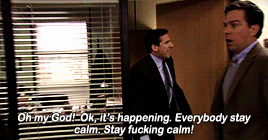
we all use ‘em, just by different intensity:
↦ self-preservation (SP), sexual (SX), and social (SO).
that basically covers every area of life. they can be described and associated with the symbolic 6 elements (fire, water, earth, air, metal, wood) like this:
----------------
:: 🍎 SELF-PRESERVATION INSTINCT
SP - being preoccupied with the body, immediate environment, daily life, food intake, state of health, housing/home, room temperature, mundane affairs, weather/climate, close-by nature, money, physicality, pleasure or harm of the senses, decor/interior, your things: ‘stuff’, stability, maintenance, economy, cleanliness, transport, property, errands, constancy, business, boundaries, stress, clothing, travel, any living foundations and resources.
# PRIMARY FEAR: mortality, sickness, annihilation, poverty
🌳 ELEMENT: earth/wood/metal - solidity, lasting, groundwork
+ common misconception: “only sensing types = self-preservation!”. intuitives can also tap into SP, especially when they use logic. say, an ENTJ could use the self-pres instinct more than an ISFP in some cases.
🌹 SP EXAMPLE. bts’ min yoongi
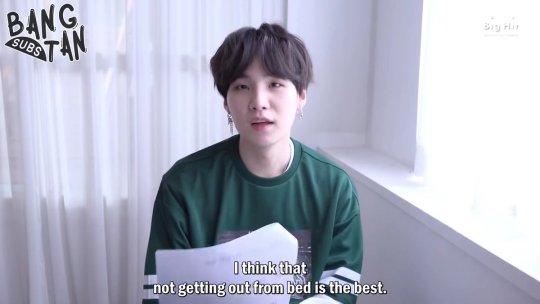
yoongi is most known for copious producing. he surrounds himself with work, being a calming presence in person. he’s reserved rather than an energizer bunny or a deliberate center of attention. yoongi handles living area repairs, keeping his body warm, cooking, material/financial security, music equipment, and his sleep to a fault. extremely domestic, grounded, and task-oriented. his personality is very ‘earth’.
----------------
:: 🍎 SEXUAL INSTINCT
SX - seeking stimulation, merging, passionate outlets, immersion, one’s impulses/urge, chemistry, aliveness, excitement, fusion with/taking in whole an abstract subject/person/activity, fiery thrill, desire, steaminess, arousal, turn-ons/offs, craving VS repulsion, one’s impact, showing the underbelly, risk, surrender, obsession-compulsion, bonding, taboo, attraction or disruption, mating strategy, rawness, grit, edge, being a peacock = flaunting yourself.
# PRIMARY FEAR: incompleteness, attraction loss, non-desirability
🔥💧ELEMENT: fire/water - instability, energy, back and forth
+ common misconception: “only this instinct is responsible for relationship topics and sex”. SP also entails stable relations in the home, and reproduction. while SO is a major component in forming interpersonal bonds.
🌹 SX EXAMPLE. shinee’s lee taemin

taemin captivates with alluring stage displays focused on seduction, attractiveness, eroticism, dare. he toys with danger, darkness, S&M, and his work explores gender-nonconformity. taemin gets under the viewer’s skin. he’s characterized as a cheeky flirt, fashionable tease, and provocateur with interests and choreos that would make other people flinch. his personality is very ‘fire & water´.
----------------
:: 🍎 SOCIAL INSTINCT
SO - an interest in social surrounding, community, harmonious connection, social protocol, pecking order, looking to others, being a member of sth to derive identity, group safety, bigger causes, competitions, affiliations, broadcasting, self-display, social movements, good/bad people distinction, social graces, upbringing, acceptance, altruism, etiquette, herd mentality, cohesion, family orientation, politics, history/tradition, being ‘seen as ___’, language, articulation, social media, trends.
# PRIMARY FEAR: loneliness, alienation, inferiority
💨ELEMENT: air/wind - mobility, communication, fluidity
+ common misconceptions: “people who use SO a lot are extroverts/social butterflies/feelers with a high EQ”. while that is often true, you could be an ISTJ who very much values keeping up community-wise over SP and SX.
🌹 SO EXAMPLE. nct’s mark lee
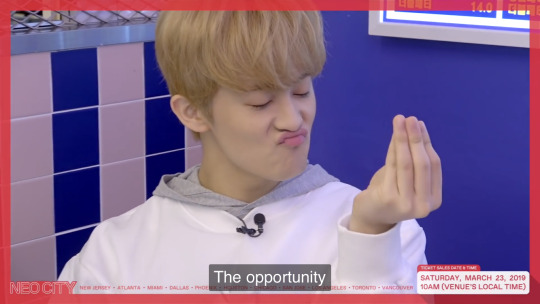
mark is everywhere you look. he can fit into any subgroup that’s new on the scene. he’s equipped with the latest internet slang and memes - always following the pulse of time and its thousand people projects. mark is seen as a posterboy of his generation, everyone’s younger brother. he’s a guy who can strike conversation with anybody, juggling several fandoms in several languages. his personality is very ‘air´.
----------------
typing people is only the beginning, you can also apply the instincts to general phenomena! for instance.
- instinct examples from the kpop world:
🍒 SP: merch giveaways, ticketing process, designers/sponsors, advertisements, filming and setting equipment, stocks, pop-up stores, physical fanart, food as variety show competition prizes, idol’s dorms, concert logistics, dance studios, physical copies/photocards, organization and schedule, cooking shows, diets, sales, airport touchdowns, idols working out, staff and directors, companies
🍒 SX: music video concepts, fanfic and scenario writers, wake-up bubble messages, one-on-one fanmeets, shipping, youtube fancam compilations, relay cams, aegyo, high note battles, dating bans, things you write in the tags, banger music, choreography, delulus/sasaengs, controversies, group visuals, attractive makeup, niche content creators, romance drama acting, the group center, choosing your bias
🍒 SO: huge scale fansigns, meme creators, multifandom, comebacks, halloween parties, fandom wars, variety shows, clout, viral moments, mascots, fanzines, censorship, music & award shows, kpop slang words, stan twitter, scandals, popular content creators, hierarchy roles (maknae etc), kpop blogs and news outlets/kpop journalism, photoshoots, a concert queue/audience, trainees, debuts and releases, fanchants
☞ see what you pay the most attention to and care the most, where you’re sort of up to date/care a little, and where you don’t keep up with/have no clue. it’ll say everything about which instinct is how strong in you.
how instincts come together
needless to say, these areas overlap and merge. mistyping can be common as this theory intersects three instincts /in relation/ to one another rather than assigning you only one and you’re ready to go.
↳ 🍉 everyone will use a combination of two (!) at once most of the time, one stronger, the other moderate, while disregarding the third. mark, for instance, uses extra SP with his SO, and SX less so. he is an idol that’s more of a cozy social butterfly (SO + SP) rather than having an enticing, intense sensual image like say skz’ hyunjin (SX + SP) that cuts to the chase.
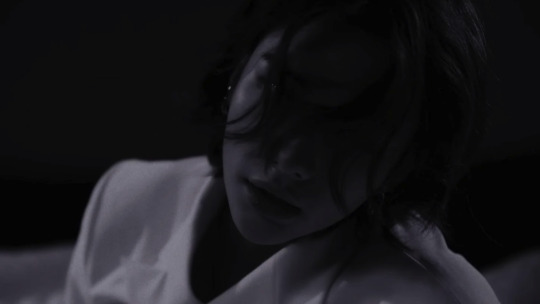
↳ 🍉 almost everyone will hyperfocus on a singular area. attention: SX being a sort of hyperfocus itself, it’s sometimes hard to distinguish. so remember that SX is about human chemistry. in any case — there’s always one strongest instinct contender. hence the other two diminish. the instinct of secondary priority to you will sort of operate in the background. for instance, bts’ jhope’s tidy SP works behind his upbeat SO instinct.
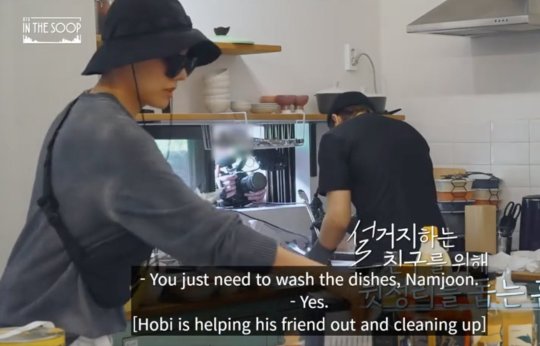
↳ 🍉 in the rare case of someone using all three instincts equally well, they will still have a preference towards one or two and shrug off the third. two instincts always develop at the expense of another one. but are there such people who can do it all? nct’s taeyong strikes me as such:
he looks after over 20 people to ensure inclusion (SO), projects an immense attractive effect on others (SX), cares about cooking/clothing/caring for himself, others and animals (SP). he might have been appointed as nct’s leader as he’s so capable in all instincts. nevertheless, his caregiving SP is his strongest drive, the major theme, added to his sensing function.
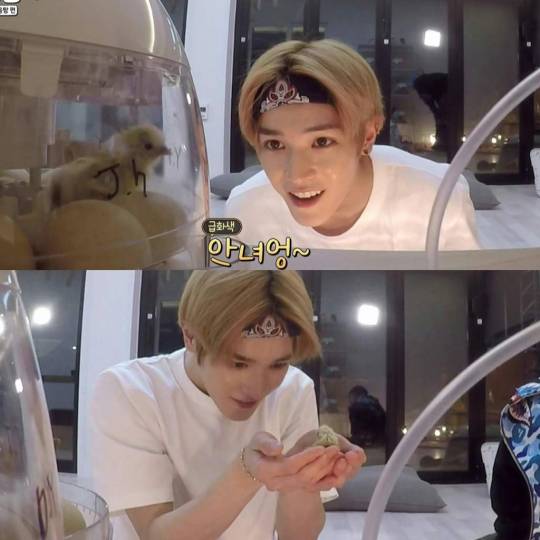
...most people have a tendency and crucial order of priority anyway, which i’ll show you now:
instinct stackings
you have a primary instinct, secondary instinct, and blind spot.
😱 the first is the burning focus that’s very set in its tracks: something you almost anxiously/desperately push for. you feel like this piece is missing in your life, so you follow a strong pull. this prevailing motivation is intrinstic, powerful, and on auto pilot. other people will immediately see it in you, while you take it for granted to such a degree you might be unaware. even if you’re not good at it, you want to handle it all by yourself. this area in life is constantly sought-out.
😊 the second is your successful and more laid-back way of going about the first. sort of like a carefree playground, a resource, the home base. it’s the somewhat stashed-away superpower, your area of supporting adjustment to satisfy your dominant 1st drive. the pressure is off here, it’s ‘not that deep’ to you. you ask for help but also can manage by yourself, always adequately so. the secondary instinct feels available and comfortable to the person. there is no extra effort needed. this instinct also keeps other people (!) who overuse or underuse it at bay.
😴 the last is the sacrifice or consequence. your dormant drive that’s blocked out, underdeveloped. it can exhaust you easily when tapped into. it’s an area of awkward insecurity; something you will not wanna talk about. you’re too unbothered, so it wreaks havoc, but you’re also rather ‘free’ from its chains until it suddenly becomes necessary in a situation. you dismiss this overwhelming area of life, compensate with the other instincts. you depend on other people to help you with it.
see how like with stacking together blocks of mbti functions, we slowly move into building individual types by putting instincts into positions of preference?

in essence, the first aka dominant and last instinct positions take things to an extreme (too much VS lack). the middle instinct is usually in perfect tune rather than biting off more than it can chew, or underperforming and never minding the topic at all. you have an entire ‘scale’ right there. and so it follows:
🍓SP in the stacking
SP doms overemphasize dealing with material safety nets and their own body, tidying and organizing and preserving and hustling to survive, building things up to last. they chase their every personal need and self-protect at all costs. (e.g. kun, jennie, xiumin, bom, shownu)
SP 2nds take care of themselves/others as a means to an end checking off all basic survival boxes (e.g. healthy diet, stable income), but don’t take material safety and health to an extreme. they are adequately hands-on, bothering with climate, finance, and living structures in balance. (e.g. wonho, j-hope, chen)
SP blind spots neglect their physical wellbeing and would rather not self-monitor. they eschew topics of proper providing, long-term resources, their living situation/environment. they are anti-conservation with everything and prefer deep transformation, going all out and creating a spark. (e.g. jimin, felix, lisa)
🍓SX in the stacking
SX doms recklessly pursue the juice of a situation, dig deep, divide the masses, go buckwild, and come on very strong, explicit, and shocking. they’re the flame that burns too bright. they want to be polarizingly interesting and feel truly alive jumping from one high to the other: they want all the spice. (e.g. changkyun, yuta, ten, lay, hyuna, jessi)
SX 2nds regularly seek to be rather energized and refreshed, but don’t overdo the heated give and take of SX craving. they’re not obsessive or self-destructive. they control and tame the game of sex appeal and attraction rather than going haywire or fearing to tap into it. they can uphold chemistry. (e.g. chanyeol, minho, bangchan)
SX blind spots are understated, avoid being overly thrilled and immersed in something. they don’t let the guard down. they don’t go at something full throttle and would rather stay too grounded and sterile/bored than getting too much of an emotional, intimate high from something. they’re overcautious. they couldn’t rub the wrong way if they tried and are more subtle in social settings. (e.g. seokjin, johnny, onew, jisoo, suho, boa)
🍓SO in the stacking
SO doms are involved to exhaustion. they know the ropes and ranks, but to a fault, paying attention to influence, connection, status, or acclaim/leadership. they have lots of communication output-input. they screen others all the time. social cues and presentation skills are everything to them. their goal is popularity, display, fitting in, being the 200% team player. (e.g. haechan, baekhyun, s.coups, cl)
SO 2nds will mingle on the occasion. they’re decently community-driven and civil, however not compulsively social nor clout chasers. they are in the loop, but don’t crave ultra-attention. they accurately size up others and curate their friendship/family circle, firm yet flexible in their social identity and position. they join the big cause for its own sake. (e.g. yeonjun, taeyong)
SO blind spots can be out of touch and fall out of social activity, being a one-person island. they don’t want to enter a social order. they omit to ‘present’ themselves and are unaware how they relate to others; don’t maintain social bonds after an initial high. they don’t communicate a ‘brand’ off their identity and character being out there in the herd all the time. (e.g. xiaojun, kyungsoo, hyunjin)
🌹 EXAMPLE. exo’s kai
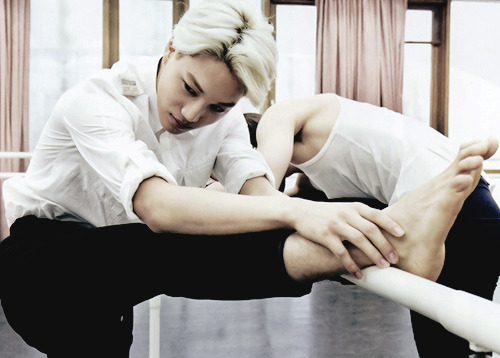
widely known as passionately ardent to painful extremes with dancing, kai comes forth with intimate solo albums and sultry viral stage moments. he’s an all or nothing magnetic performer, unafraid of doing over-the-top racy concepts that drop jaws (primary SX = the overdrive).
in the meantime, he enjoys general popularity and a lively fandom connection, drawing people in wherever he goes and being the go-to ambassador. he can blend in well, he’s sweet, measured, and lovely with crowds. the will keep disruptive people who step out of line in check. (secondary SO = the adjustment).
“i’d have no regrets dying on stage” — the detriment of his fierce practice have been repetitve injuries to his spine and overwork. kai wants to go the extra mile rather than sparing and protecting himself. jongin also regularly blows up his kitchen 💀🙈 (SP last = the awkward area).

to sum things up:
dominant instinct - most untamed energy is directed and spent here.
secondary instinct - stakes are lower, the least problems occur.
blind spot - a disregarded area, only ever indirectly or clumsily dealt with.
we use slashes to indicate that stacking order, relinquishing the blind spot.
primary/secondary(/blind spot).
so, kai’s stacking would be called:
“SX/SO”.
meaning: the sexual instinct bleeds into the social one. an individual who will utilize their carnal, expressive display (SX) to entertain/galvanize crowds (SO). it’s a very common stacking among k-pop idols. they embody the sex symbol archetype surrounded by their people/the fandom the most believably, it holds the attention. kai has always gained traction by doing just that.

------
the two flows.
there are two ways of “sorting” instinct stackings by the person’s priorities. as in all human history: one camp goes with the flow, the other swims against the stream. you have those instinct sequences that conform or rebel. synflow as in synergy (”with”), and contraflow as in contrary (”against”).
❤️ SYN-FLOW (oriented towards people): sp → so → sx → sp. aka the dominant culture. here, instincts all follow each other logically by evolution. first, humans would secure themselves and their home (SP). then, their tribe to belong somewhere (SO), and then find then intimate attractions and a joie de vivre, a zest for life (SX), only then to settle (SP), and then again orient themselves by their community (SO). and so on, as the arrows show: it’s a cycle. synflow is very “life > decay/downfall”.
🌶 CONTRA-FLOW (compelled away from people): sp → sx → so → sp. aka the counterculture. here, instincts become utopian. individuals of this flow would first secure their own safety elusively (SP), aim for metamorphosis looking for mates (SX), and only then become social animals meeting fellow outsiders (SO), only to settle down (SP), only to break it up again causing a spark not to become complacent (SX). synflow favors revolution over harmonious stability.
[- note: SX/SP can seem contraflow since their SO is so low, and SO/SP can feel synflow because their SO is so high, e.g. like j-hope.]
TIP: you can get a feeling where someone belongs by how against the grain they go or whether they nurture what they have. example:
taeyong is synflow SP/SO. wholesome, uniting everyone. he gains the respect of all he’s surrounded by, being the reliable pillar of his sphere. synflow creates community expansion (SP -> SO): nct centering around him is just that. taeyong takes care (SP) of literally everyone (SO).

but, rather than relying on flow alone, it’s always better to type by what you think the preferred instinct is, their secondary drive, and the blind spot. the same goes for having an overview of the theory before taking frankly mediocre internet tests. look at the person’s vita, find the dominant instinct first. and then the blindspot, which is often easier to determine than the 2nd, simply by its sheer absence.
6 overall types emerge.
if you look at your friends or the people whose personality you crush on, you’ll usually either share your dominant instinct and/or come from the same flow. going by the idea that we use two instincts mostly, in a certain order, this results in 6 instinctual archetypes:
synflow: SP/SO, SO/SX, SX/SP
contraflow: SP/SX, SX/SO, SO/SP
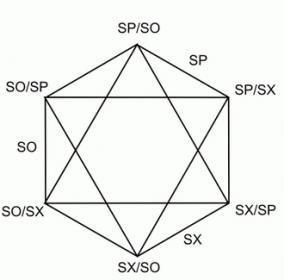
so the motivations, topics, actions, and blind spots of the 6 types will look like the following. i love the idea of stepping this up a whole notch (beginner learners bear with me) using symbolic ‘realms’ matching the types in the advanced typology of instincts.
SP/SO (realm of animals) - handling resources/the body to manage people/affiliations. one does not chase a craving for chemistry.
SO/SX (realm of humans) - being out there to act out your desire/passion. one forgets to take care of body and home.
SX/SP (realm of hungry ghosts) - exuding magnetic sexuality to establish stability. one does not consciously join a social cause.
SP/SX (realm of the underworld) - assuring resources to bond with something/somebody. one will eschew other’s social game rules.
SX/SO (realm of gods) - flaunting one’s attraction to socialize. one leaves health, safety, and material things to fate.
SO/SP (realm of titans/demons) - navigating community to acquire material benefit. one does not dive into obsessive self-immersion.
compare the tibetan buddhist wheel of life (called bhāvacakra; bhāva (भाव) = “becoming”, chakra (चक्र) = cycle). it explains our ever-revolving existence and root of striving/suffering like a giant populated rosetta stone of the instincts.

the six inner compartments are meant, this is the wheel’s labelled overview to show what goes on in each section:
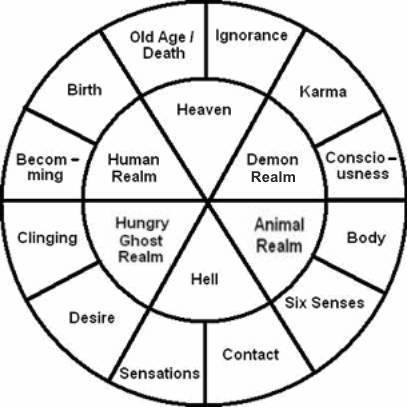
the theory is not rooted in tibetan buddhism, this is just an example where instincts can be spotted in overarching concepts/archetypes worldwide. i found this analogy incredible and illustrative to remember an allegory for the stackings. since i learned it like this, it hasn’t left my mind.
example. we talked about SX/SO being a common type of kpop idols. they’re found in the realm of gods/heaven so to speak, which is about creating ecstasy, beauty — makes some major sense to me.

instinct health
why do we strive at all? the whole system depends on an imbalance. if neurosis happens, it will show up in an overly pursued primary instinct or a thoroughly discarded blind spot, which tends to coincide with one’s least implemented mbti function(s), but not always. rather, the idea of health goes like this:
the first instinct is often overused. (= ‘unhealthy’)
the second is mostly balanced, supporting the 1st. (= ‘healthy’)
the third is underused. (= ‘unhealthy’)
the term of health is used pretty loosely in this theory, all it means is: there’s either too much, just right, or not enough of an instinct at work. some people’s first instinct may be less intense than another’s, and we all have blind spots of different severity. some use the second instinct effortlessly, others still do baby steps and encounter some road blocks. no stacking is the same.
regardless, the overall tenet is: your instinct stacking is like a subconscious seesaw.
one point high up doing the most (1st instinct), the other down low pushing against (3rd instinct), and everybody forgets what is going on in the middle (2nd instinct) to keep things running 😂

HACKS:
- 🍓a primary instinct overdrive, your ‘demons’, can usually be dealt with by the mellowing secondary influence. it’s the natural consequence of the first instinct anyway. we all use our secondary to cool off the heat. we saw in the evolution history how these things move in circles. however! the dominant instinct will always be one’s #1 inevitable motivation. it is learned and ingrained. you can’t forcibly change your stacking, only focus differently with deliberation to develop yourself. the more you practice the 2nd instinct, the healthier the first will be: the weight is taken off.
- 🍓the 2nd instinct being almost always ‘healthy’ (= not extreme in either direction, too strong or too weak) can help you type someone. where in life have you or the person achieved an equilibrium? something that neither irks you all day and consumes your attention (first), or something you always forget or brush away (blind spot)? by the way: you might awkwardly clash with the stacking that has the same second instinct as you, but they are from the other flow. SX/SP and SO/SP, for instance. you will prioritize entirely different things (1st), and are excellent where the other lacks (3rd), but act the same way (2nd).
- 🍓with most people, one’s blind spot will remain the somewhat helpless enfant terrible. unless... there are other people of the same flow that take on that task for you. but! say you’re SO/SX, you meet an SP/SX who has your dormant instinct as their hyperfocus: it might solve your problems, but... they too unhealthily use self-preservation, and they’re contraflow, while you are synflow! rather, your best bet is an SO/SP. they use secondary self-pres in a balanced way to help your blindspot, and are 100% on board with your 1st instinct focus. and vice versa. hence:
instinct pairings: intertype relations!
yes, there are patterns, even if this aspect of the theory is less explored and not set in stone. as i see it, people of the same instinctual stack are usually besties by being birds of a feather, have you noticed? e.g., stray kids’ felix and chan are both SO/SX! they both bond (= secondary SX) over being aussies publically (= dominant SO).

all stacks within their own flow are rather compatible, and any pairing can work under the right circumstances. don’t discard someone if they seemingly don’t fit your instinct; they could have same ideal love language, a matching mbti type (e.g. ESFJ + INTJ), instinct isn’t everything, et cetera.
🍎 but there are still some (semi-)duals ([rather] ideal partners), activators (energizers), benefactors (helpers), supervisors (leaders), and conflictors (opposers) as type relations that have been theorized to rank like this. the dual is the most, the conflictor the least compatible.
if you want the whole shebang in one go:
- SX/SO: Sx/sp (dual) > Sx/So (activity) > So/sx (semi-dual) > So/sp (benefactor) > sp/sx (supervisor) > sp/so (conflict)
- SX/SP: Sx/so(dual) > Sx/sp (activity) > Sp/sx (semi-dual) > Sp/so (benefactor) > So/sx (supervisor) > So/sp (conflict)
- SO/SP: So/sz (dual) > So/Sp (activity) > Sp/so (semi-dual) > Sp/sx (benefactor) > sx/so (supervisor) > sx/sp (conflict)
- SP/SO: Sp/sx (dual) > Sp/So (activity) > So/sp (semi-dual) > So/sx (benefactor) > sx/sp (supervisor) > sx/so (conflict)
-SO/SX: So/sp (dual) > So/Sx (activity) > Sx/so(semi-dual) > Sx/sp (benefactor) > sp/so (supervisor) > sp/sx (conflict)
- SP/SX: Sp/so (dual) > Sp/Sx (activity) > Sx/Sp (semi-dual) > Sx/so (benefactor) > so/sp (supervisor) > so/sx (conflict)

you don’t have to memorize this. it’s just some extra theorizing and playing around with types. let’s break it down with one specific intertype relation:
🍒 synflow benefactors:
SP/SO needs SO/SX
but SO/SX needs SX/SP
but SX/SP needs SP/SO (and repeat)
you can see how the supervisor’s own blind spot is the supervisee’s raging first intinct! so the story of this benefit chain goes on and on. 😅 back to the cycle! the less integrated the blind spot, the harder it is to transcend it.
ideally, you would ‘group’ humans as three in each flow: a perpetuum mobile. a family like that would be extremely functional, or a poly relationship. they all cover each other’s weak areas + balance another’s excess energy. meanwhile: love triangles can happen when a person from the opposing flow but the right secondary instinct, or the same dominant instinct enters the scene.
... but let’s talk about which pairings are the most complementary and drama-free.
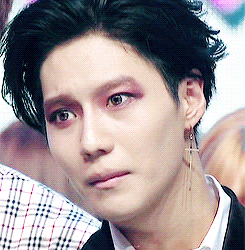
the ideal dyad constellation is actually pairing instincts that are from different flows, but have the other’s blind spot as their second instinct: and the same first. 💡
shared values and concerns, they click immediately. their ‘home turf’ being the same sticks like glue. their occupied areas in life are synonymous so they will not drift apart. (primary instincts),
and their way of acting healthily in the world (2nd instincts)...
compensates for the other’s skeleton in the closet (=blind spots).
and the fact that they are from opposing flows ironically creates another balance, but enough tension to keep things fresh and dynamic. so let’s announce ‘em!
🍒 instinct duals / ideal pairings / dream teams:
SP/SO and SP/SX
SO/SX and SO/SP
SX/SP and SX/SO
so far so good, but as mentioned, it’s not set in stone. you find healthy friendships, parenting, work relations, and lovers of the most random stacking combos. instinct isn’t all there is, it only explains motivation and general focus in life.
and that’s it for now. hope you enjoyed a little deep dive into this theory and got a feeling for why people act the way they do based on their variant. as always: happy typing of your favorites ✍️
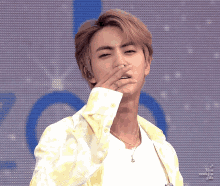
- related bonus article for the advanced readers: all enneagram variants described
#instinctual variants#mbti#enneagram#instinct variants#personality theory#typing#personality types#enneagram types#enneagram variants#bts#nct#skz#exo#blackpink#mx#svt#long post
245 notes
·
View notes
Text
9s
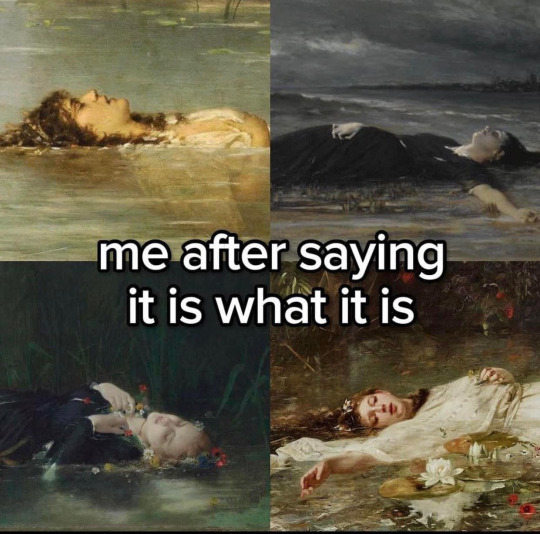
#enneagram 9#9w8#9w1#type 9#typology#enneagram#personality theory#8w9#1w9#withdrawn triad#optimist triad#positive triad#attachment triad
96 notes
·
View notes
Text
ten(ish) years ago, I was learning about mbti for the first time, which sparked my utter fascination and delight with all things psychology.
tonight, I'm reviewing the mbti to prep for a discussion in a master level clinical counseling class.
the circle of life, etc etc etc. <3
#my feelings about mbti and other personality theories-- and how we apply and misapply them in pop psychology-- are very complex#but I'm thinking back to that girl who discovered typology and felt *seen* for the first time in her life-- she had NO idea we'd be here now#thank you Lord!!!#(everything is making me emotional this week and I am being SO normal about it)#psychology#personality theory
18 notes
·
View notes
Text
I like personality theory more than astrology not because I think it’s “more real” but because I get to CHOOSE the specific-yet-vague box I put myself into instead of having it thrust upon me by the cosmos.
#/lh#that’s so enneagram type 5w4 of me#mbti#intp#Taurus is neat tho I respect you guys#enneagram#personality typology#personality theory#Carl Jung#cognitive functions#2021 fixation has come back to haunt me#/j btw
2 notes
·
View notes
Text
Fe as a base (1st) function (ESE and EIE)
The individual is always in tune to the emotional flow surrounding him, and responds to it spontaneously and directly. He seeks out and creates activities where people are totally engaged in what they are doing. Something’s value is directly tied to how much it arouses his or another’s passion.
He is highly proactive about steering the emotional flow in the direction he himself considers ideal to a given situation. He may, for example, try to cheer people with jokes if he sees that they are too gloomy or, conversely, to get people to be serious and concentrated if they are too carefree during a crisis situation. Nevertheless, he believes emotions should be expressed as honestly as possible.
Fe as a creative (2nd) function (SEI and IEI)
The person is sensitive to the emotional atmosphere around him, either from an individual, or a group, or even from inanimate objects such as the landscape, the state of the physical environment he happens to be in, or his own emotional associations with the place or people around him. A positive emotional atmophere is essential for his sense of well being and inner peace, and he either tries to promote it himself by directly influencing it around him, or by simply moving away from the environment or the people causing a negative emotional environment in his view.
For the SEI, this takes an on-the-spot aspect and is reflected in cracking jokes, trying to make people laugh, or simply moving away from people he perceives as affecting him negatively. For the IEI, this takes a longer-term perspective; so the focus, rather than being on the immediate emotional environment, is on the perceived longer-term emotional state of others towards the individual, and is reflected in trying to be on good terms with those he interacts with or seeking distance or protection from, or “preventively” attacking, those he sees as irremediably hostile emotionally.
Fe as a role (3rd) function (LIE and LSE)
The individual makes an effort to adapt to the prevailing emotional atmosphere, especially in group situations, and tries to promote a positive emotional environment, as in making positive or witty remarks, in the presence of individuals he is already somewhat acquainted with and appreciates. Such efforts, however, are normally low-key and of short duration; it is difficult for him to display emotions more complex or intense than enthusiasm. He is essentially unable to participate in a group atmosphere where intense emotional expression as in loud laughing and mutual jokes are prevailing. The individual makes an effort to be aware of the need not to disrupt the prevailing emotional atmosphere but he does not succeed for any length of time if that would clash with his inner emotional state and private feelings about the other persons present. A typical example is the person who, in a group of people exchanging pleasantries and casual conversation, will occasionally correct erroneous statements made by others, in a way that can be perceived as annoying, despite otherwise making an effort to abide by the prevailing emotional atmosphere.
Fe as a vulnerable (4th) function (ILI and SLI)
The individual tries hard to never let himself “come apart at the seams” emotionally or even let out strong feelings publicly, because displays of passion do not come naturally and make him feel self-consciousness and vulnerable to painful criticism. This makes the individual generally seem emotionally neutral and politely indifferent to excitement and agitation around him. The individual deeply dislikes attempts by others to get him to “cheer up” or “join the fun”, especially in the context of group activities with loud emotional expression.
Fe as a suggestive (5th) function (LII and LSI)
The individual often becomes engrossed in serious work, which leads him to neglect his complementary need for fun and emotional release. He also feels vulnerable expressing himself spontaneously in public, which allows bad emotions and stress to build up, leading to depression or sudden hostility. He enjoys being around people who make him feel comfortable expressing himself, and who can make every day new and exciting.
Although he may present a hard exterior in the company of strangers, he is likely to not be serious at all with people who know him better. His behavior changes radically - a calm and serious structured person will suddenly become jovial and warm.
Fe as a mobilizing (6th) function (ILE and SLE)
The individual longs for situations where people are having fun, laughing and joking, and feel emotionally free and spontaneous. However, he is generally unable to produce this atmosphere himself and uses other means to create situations where there is a good chance that others will take the emotional initiative and create a fun and emotionally stimulating atmosphere. Failure at such attempts are met with dismay, which the individual either hides or reacts to with frustration and annoyance.
Fe as an ignoring (7th) function (ESI and EII)
The individual is perfectly able to integrate in a group emotional situations, such as people having fun and trading jokes, and sustain that for a long period of time. He is also usually adept at promoting such an atmosphere himself. However, he sees no point in doing so if his own inner emotional state does not prompt him towards that, especially if he does not feel as having positive private feelings towards the other people involved. He is aware of the need to keep a “polite façade” in certain social situations even in the presence of people he personally dislikes or during periods of negative inner emotions, but he refuses to actively attempt to integrate in, or promote, a positive external emotional atmosphere in such occasions. His disinclination for doing so increases along with his feelings of closeness with the individuals present.
Fe as a demonstrative (8th) function (SEE and IEE)
The individual appreciates situations where people are enjoying a positive emotional atmosphere as in having fun and joking together, and is quite adept at creating them himself, but does not see creating or promoting them a top priority, nor does he actively look for people who maintain or need such an atmosphere; too high a focus on that is seen by the individual as overdone.
Source: Wikisocion
19 notes
·
View notes